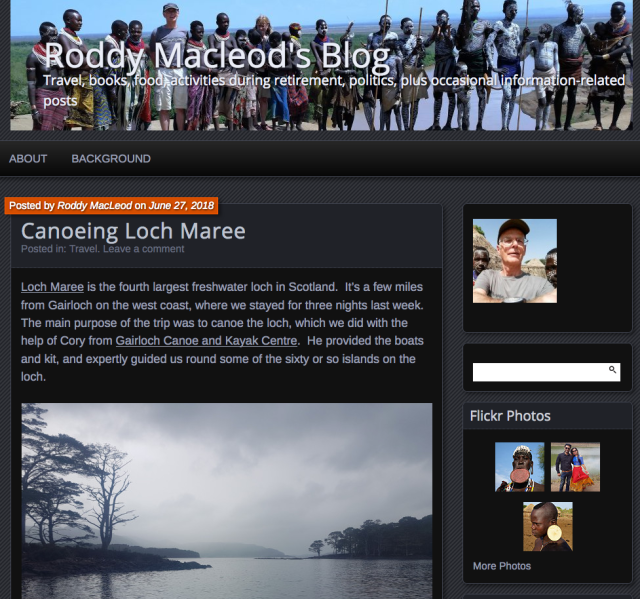A blog from Roddy who came on Loch Maree with us
Roddy Macloead was a librarian and is now a blogger- he used to run the Internet Resources Newsletter, ISSN: 1361-9381, a popular free monthly Newsletter for academics, students, engineers, scientists, and social scientists- Marion Kennedy and Catherine Ure helped a lot with IRN. He is now retired and runs a travel, food and activities blog from his home in Edinburgh.
Below is a link to his blog on the trip he took out with us on Loch Maree;
https://roddymacleod.wordpress.com/2018/06/27/canoeing-loch-maree/

Roddy enjoyed the chance to revisit canoeing having not done it for years and was lucky enough to spot one of the UK’s native species of carnivorous plants, a sundew (good for eating midges!).
Sundews are “flypaper” plants that trap prey in sticky hairs on their leaves. They make up one of the largest groups of carnivorous plants. Long tentacles protrude from their leaves, each with a sticky gland at the tip. These droplets look like dew glistening in the sun, thus their name. The glands produce nectar to attract prey, powerful adhesive to trap it, and enzymes to digest it. Once an insect becomes stuck, nearby tentacles coil around the insect and smother it. Sundews can reach a height of up to 10 inches (25 centimeters). However, some species are tall and with a vine-like appearance, while others hug the ground, making their size variable.
Sundew plants are found in boggy areas (such as the shores of Loch Maree) where there are plentiful insects for them to feast on, making Scotland the perfect environment for them to flourish!
All of our experienced guides have a wealth of knowledge about the local plants and wildlife in their location; not only based on the water but also on the coastlines along which they paddle. With centres in Gairloch, Skye and Loch Ness there’s plenty for you to discover; look at our website to book online today!

Comments are closed